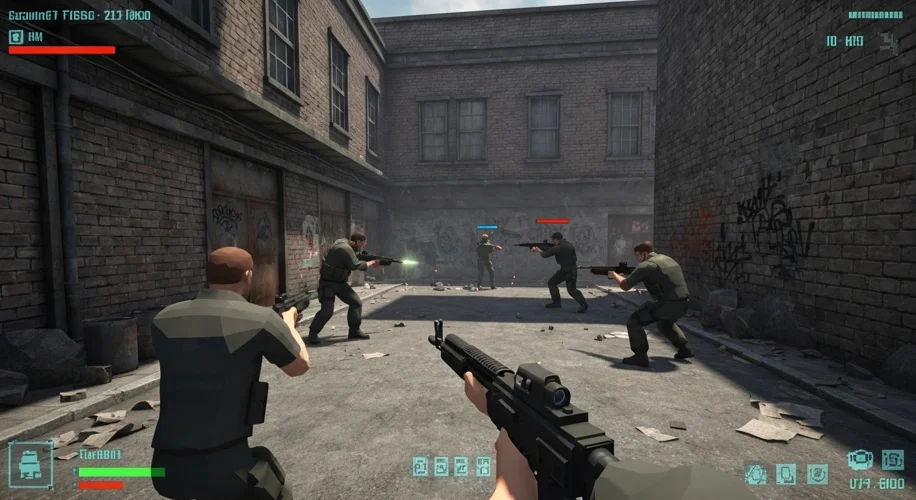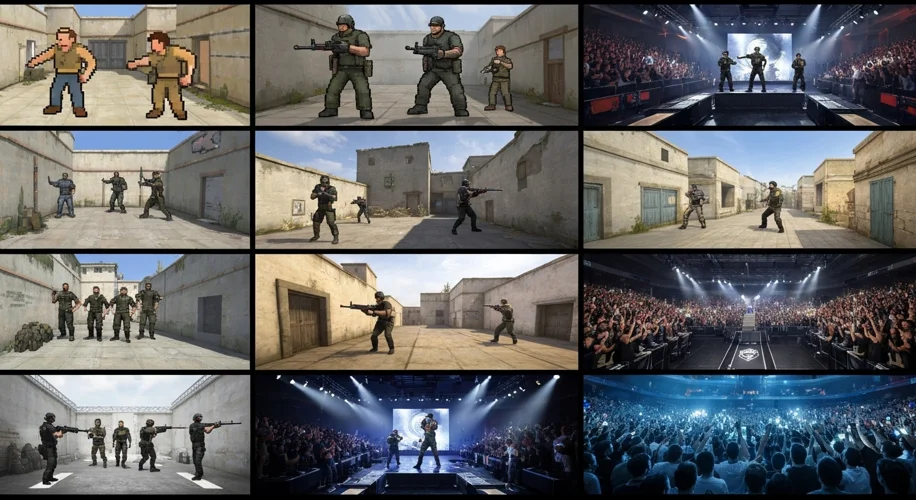In the late 1990s, the digital landscape of PC gaming was evolving at a breakneck pace. While grand studios churned out blockbuster titles, a revolution was brewing in the most unlikely of places: a university dorm room. It was here, amidst the hum of computers and the shared ambition of students, that a modification to an existing game would ignite a global phenomenon. This is the story of Counter-Strike, a tale of grassroots innovation that transformed a humble mod into a billion-dollar esports empire.
Our journey begins with Half-Life, Valve Corporation’s critically acclaimed 1998 first-person shooter. Its immersive gameplay and sophisticated storytelling had already captivated players worldwide. However, it was the game’s open architecture, designed to encourage user creativity, that would prove to be its most enduring legacy. Enter Minh ‘Gooseman’ Le and Jess Cliffe, two aspiring game developers who saw potential far beyond the confines of the original game.
Le, a Vietnamese-Canadian student at Simon Fraser University, was captivated by the idea of a realistic, team-based tactical shooter. Inspired by movies and his own fascination with special forces, he envisioned a game where two teams—counter-terrorists and terrorists—clashed in objective-based scenarios. Cliffe, a fellow student and collaborator, shared this vision. Together, working in the confines of their dorm, they began developing what would become known as Counter-Strike.
The development process was a labor of love, fueled by passion rather than corporate funding. Le focused on the game’s mechanics and visual design, meticulously crafting character models and weapon animations. Cliffe, with his knack for community building, managed the game’s early promotion and public relations. They released the first public beta version of Counter-Strike in June 1999. It was a raw, unpolished product, but its core gameplay loop was immediately addictive.

The game’s premise was simple yet compelling: counter-terrorists aim to defuse bombs or rescue hostages, while terrorists strive to plant bombs or prevent the hostages from being rescued. What set Counter-Strike apart was its emphasis on tactical coordination, precise aiming, and high stakes—a single life often meant the difference between victory and defeat.
Word of mouth spread like wildfire. Gamers, impressed by the mod’s realism and intense gameplay, began downloading and playing it in droves. Servers popped up across the globe, often hosted by passionate community members. The mod’s popularity surged, eclipsing many commercial games. This organic growth, driven entirely by player enthusiasm, caught the attention of Valve.
Recognizing the immense potential of Counter-Strike, Valve acquired the development rights in 2000, bringing Le and Cliffe onto their team. This partnership marked a turning point, allowing the game to receive official support, further development, and wider distribution. Counter-Strike 1.0 was released in November 2000, solidifying its position as a dominant force in online gaming.
The game’s impact was profound. It democratized game development, proving that innovative ideas could emerge from anywhere, not just established studios. It laid the foundation for the modern esports industry, with competitive play becoming a central pillar of its appeal. Professional leagues and tournaments began to form, drawing large audiences and showcasing the game’s strategic depth.
Over the years, Counter-Strike has seen numerous iterations, including Condition Zero, Source, and the currently dominant Global Offensive (CS:GO), and the upcoming Counter-Strike 2. Each version has refined the core gameplay while introducing new features and improving graphics. Yet, the fundamental spirit of intense, tactical team-based combat remains. The game has fostered vibrant online communities, spawned countless professional careers, and generated billions in revenue, a testament to the vision of two students in a dorm room.
The story of Counter-Strike is more than just a gaming success. It’s a powerful narrative about the impact of user-generated content, the power of online communities, and the unexpected places where innovation can flourish. It serves as a reminder that sometimes, the most significant revolutions begin with a simple idea, a shared passion, and a dedicated few.

